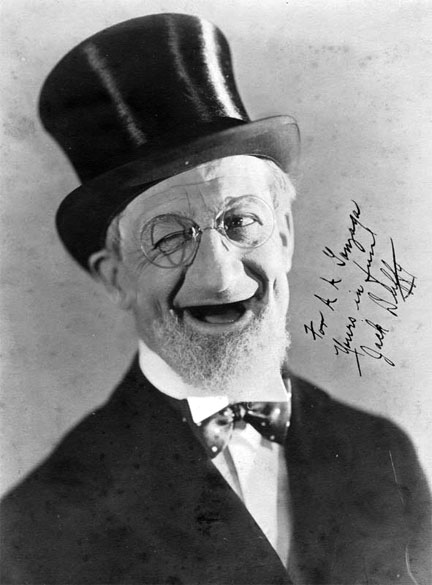I don’t remember how or when I came up with the idea of doing silent film shows at senior living facilities. On the surface, this may not sound all that exciting in terms of the sheen of Show Business or resume-building, but something a senior said to me at one of these is what keeps me wanting to do these programs.
When my folks showed me the beautiful, old, wood-walled auditorium in the independent-living place they were considering moving into, my radar immediately went into gear. My wife and daughter have caught me “casing the joint” any time we go to a theater or community space. Is there a drop-down screen? Is there a ceiling-mounted projector? What’s the piano like?
Was this around the same time I was doing “spaserstokk” shows in Tromsø? I’m trying to line the events up with out trawling through old emails. The Silent Film Days festival in Norway that I’ve played at several times had connected with a program that brought me, a projectionist from the festival, and usually also the festival director Martha Otte, to a few different senior living facilities in the Tromsø region. “Spaserstokk” literally translates to “walking stick”.
Some of the places were near Tromsø, and there was at least one way out, about an hour’s drive away, on the edge of a fjord. For that program, the kids in the small, single-room schoolhouse across the road joined in, and we had this delightful intergenerational audience for Keaton’s “En Uke” (One Week). This short and Chaplin’s The Cure were the usual choices for these “spaserstokk” (pron. spa-SEHR-stok) programs. The folks who’d been rolled in and were more in the “nursing home” or “assisted living” stages, may not have responded much, but certainly the faces of everyone else lit up and remained smiles after the show. Some people shared memories of seeing movies in the city’s original cinema, the Verdensteatret (it’s still open!).

Perhaps I’d done some of these already when I toured the place with my folks. I think they already knew what I was thinking, and I knew this could work and was worth trying out. Not just because the space was there, but – and I’ve found this to be key – there was a decent-sized independent living population there. I’ve played a program at this place where my rather active and healthy folks now reside every year since then, and it’s one of the more well-attended events the place has.
I’ve done shows at other places with an independent living population in Shelburne VT and Meridian ID, and at DOROT in Manhattan’s Upper West Side, among others. They’re always a hit, and I inevitably wind up meeting people who have some connection to the silent era, people whose mother or father worked in movie theaters back in the day or played in cinemas. A couple months ago I played a show where a woman in the audience told me her grandfather had been in Fred Karno’s troupe with Chaplin!
It’s not necessarily because of which film I’m showing. There’s something about the part of the brain that’s activated at a silent film showing, I think. It’s part of my theory about the rising popularity of silents, that our right brain gets some much needed exercise and engagement. Addressing the audience of seniors before the show and again after, for my intro and then Q&A, I can see the differences in their faces. The mood as people walk in, many parking their rolling walkers in a designated space, and as they leave, is different.
The reason “when are you coming back?” is the question I get most often at these programs isn’t because of my amazing music, necessarily. It’s because, as one woman said to me after a show, “We don’t get to laugh like this.” There’s something therapeutic about the kind of laughs you have at silent comedies, I think, in general but also perhaps even more important for seniors.
If you’d like some tips on doing shows at senior living places, send me an email. There are several variables to contend with in terms of how something gets shown, tech-wise, and the more you and the facility (and their A/V person) are prepared for before you show up the better.
When I started showing silent films at senior facilities in the early seventies, the seniors themselves were all old enough to have seen the films when they were originally released. That’s probably not the case anymore. Most seniors today were born decades after The Cure.
Nice story, good for you. Nothing original here, but there is something magical about the silent film, whether comedy or dramatic.